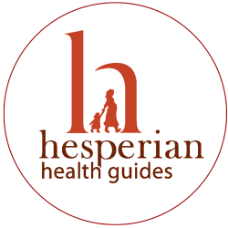“The sooner a child starts taking ART, the more strength she will have to fight other illnesses, to develop her mind and spirit, to grow physically and to live a full life. She can even grow to have children of her own and then look after her grandchildren!”
—
Helping Children Live with HIV
Millions of women, men, and children continue to be affected by HIV each year. While accessibility to antiretrovirals and medical treatment is expanding throughout the world, leading international health organizations agree that mitigating the impact of HIV on children and their communities remains a challenge. Babies and young children, who are completely dependent on caregivers for their physical and developmental needs, are uniquely vulnerable. HIV fragments traditional forms of support and with resources strained, caregivers and community health workers need practical, motivating information to enable them to meet children’s critical developmental needs and support struggling families.
Helping Children Live with HIV offers a holistic approach by building on the existing knowledge of parents and caregivers and respecting the importance of other local resources. It integrates health care, illness prevention, and psychosocial support for children and families coping with poverty, food insecurity, emotional trauma, loss, as well as stigma and discrimination.
This guide is intended for broad use by parents, family members, and health workers in home settings and throughout community-based health programs.
View Sample Pages
Table of Contents (PDF)
Praise for Helping Children Live with HIV
"Pediatric HIV has come a long way from the beginning of the epidemic! Helping Children Live with HIV published by Hesperian Health Guides is a fabulous resource for caregivers, community health workers, social workers, early education advocates, child development specialists - ANYONE striving to improve the quality of life for children LIVING with HIV in this era of prevention, treatment and care for ALL children. With simple, yet comprehensive explanations, this guide provides information at a glance dealing with all aspects of care with charming vignettes and beautiful pen-and-ink drawings encompassing family and child portraits from different cultural and ethnic backgrounds."
--Teresa Courville, RN and Ann Petru, MD, Pediatric HIV and AIDS Program, UCSF Benioff Children's Hospital, Oakland
"Helping Children Live with HIV, is exactly what we need in Africa: practical, easy to understand, and medically accurate! It’s accessible to everyone, not just professionals, and connects the dots between medicine, mental health, living conditions, and child development for a holistic approach to caring for children with HIV. This resource takes the capabilities of our parents and family members seriously, recognizing that we are the ones who will learn and grow and teach ourselves to help children affected by HIV thrive and live healthy lives. We are proud to have had a part in creating Helping Children Live with HIV to be a vital resource to care for children and communities affected by HIV and any child made vulnerable by environmental destruction, poverty, sickness, and injustice. Peace without health is no peace at all. "
--Feliciano dos Santos, ED of Estamos Mozambique & Hesperian Field-Testing Partner
"It is a pleasure to see the release of Hesperian's new book devoted to children living with HIV. Many years ago, Hesperian's resources helped me greatly as a young nurse in rural Zimbabwe, a country hard hit by the AIDS epidemic. Since that difficult time, HIV treatment has been transformed from a life threatening illness to a manageable chronic disease. Despite these advances and excellent treatment outcomes in children, children continue to lag behind adults in access to sustained HIV care and treatment. Hesperian's focus on the family and community in this publication devoted to children living with HIV is spot on! Family based care is fundamental to high quality pediatric care and essential to sustained HIV treatment. The often used phrase, "it takes a village" is so true in this case and is a phrase which can mean the difference between life and death for the most vulnerable among us."
--Susan Michaels-Strasser PhD., MS., MPH.



.jpg)
